Compression in music and audio has several aspects, and it helps to be familiar with all of them. Understanding compression (and what it does) is critical for all producers and audio engineers, since it makes a big difference in your music.
Compression in music is a process that reduces the volume of high frequencies and boosts the volume of low frequencies of an audio track into a specific frequency band. This increases the balance and clarity of the audio, making it easier to mix. Compression has various control parameters.
Anyone who is learning about audio effects must take the time to learn about compression, what it does to an audio signal, and what it makes music sound like. Compression is a standard effect in the music industry, and it is often misused due to a lack of understanding.
Let’s explore compression to understand it better and learn how to use it well.
What Is Music Compression?
Compression is a common effect used in all types of music, both live and recorded. Compression is used in all genres to change the way music sounds. Understanding it is critical for everyone in the music industry.

Compression (also called dynamic range compression) is the process of reducing the high volumes and boosting the low volumes within an audio signal. This compresses the song it into a range of specific sonic parameters.
Dynamic range compression can be used in several ways to affect the characteristics of a sound or an audio track on multiple levels. There are multiple facets to compression, all of which are adjustable.
Adjusting each aspect of compression has a different effect on the way an audio signal sounds.
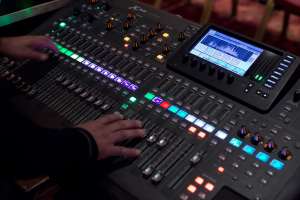
These aspects of compression are known as compression controls, and they are broken down as the following:
- Threshold
- Ratio
- Attack
- Release
- Knees
- Make-up gain
- Range
- Lock-ahead or Dry/Wet control
These controls change the way compression affects audio, which ultimately changes the way the music sounds. This could be on a per-track or per-instrument basis – or these controls can be applied to compression on a fully mixed track.
Let’s briefly explore each of these compression controls to better understand this effect, starting with threshold.
Threshold
The threshold control in a compressor is the point at which the compression is applied to the audio signal. This parameter changes the volume at which the compression effect is activated, as well as when the compression is deactivated.

This is the most basic function of compression control, but it is among the most important to use well.
Ratio
The ratio control in a compressor controls how hard the compression is applied to an audio signal. This means that the ratio control determines how much the signal is compressed and where the compression limit is for the signal.

Ratio is the easiest compression control to hear when making changes to the signal.
Attack
The attack control in audio compression determines how quickly the compression effect is introduced to the signal when it is activated by the threshold and how quickly the effect reaches the assigned compression ratio.
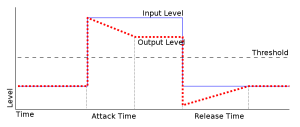
This control makes the compression feel more aggressive. If it is turned up very high, it causes compression to act as a limiter to the signal.
Release
The release control in compression is similar to the decay parameter in modulation effects. This determines how quickly the effect stops when the audio signal falls below the compression threshold.

Knees
The knee controls for compression are categorized as hard knee and soft knee. These control the rate at which the ratio of compression is introduced, making them similar to the attack control. Some compressors have a knee control instead of an attack control.
These controls define the response curve of the compression at the threshold. When looking at the response curve, a hard knee is a steep change in the curve when the compression is activated until it reaches the assigned ratio.
A soft knee is a gentle change in the response curve as the compression is implemented slightly more gradually.
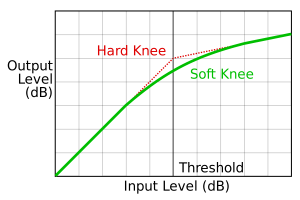
This is why the control is referred to knee control, as the change in the response curve resembles a knee that is deeply or shallowly bent.
Make-Up Gain
Compression always comes with a drop in gain and a decrease in volume as the audio signal is altered to bring the frequency range into the prescribed range.
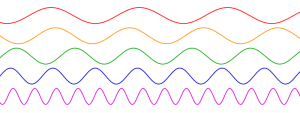
Make-up gain is usually simply referred to as the gain control in a compressor. It is used to add back some of the gain and volume that is lost due to the compression effect.
Range
The range control in a compressor determines the maximum range of gain control (or the highest amount of compression) applied to the audio signal.
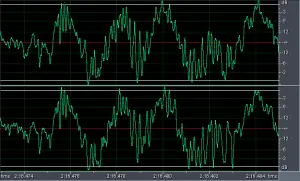
This control is set in decibels, and the range that is set for the compression is held on either side of the frequency range.
Lock-Ahead or Dry/Wet Control
Most compressors and compression plugins have either a lock-ahead or a dry/wet control. These controls use different functions to create the same outcome.
Both of these controls are designed to produce a less harsh, smoother, and organic-sounding compression.
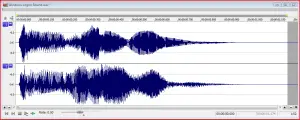
The dry/wet control blends the uncompressed signal with the compressed signal to achieve a more organic sound, while the lock-ahead function splits the compressed signal into left and right and delays one side. This creates a smoother compression tone, but it also increases latency.
What Is The Purpose Of Compression In Music?
We have established what compression is and how it is controlled to alter specific aspects and characteristics of an audio signal. Still, many musicians and producers wonder about the purpose of compression.
We know what compression does, but what is the purpose of applying compression to music? The main purpose of compression is to reduce the uncontrollable aspects of an audio signal.
Compression reduces transient frequencies, decreases feedback, and controls both the upper and lower ends of a frequency band.
The result of this effect is a more balanced and controllable audio signal that is far easier to mix, send, record, and broadcast.
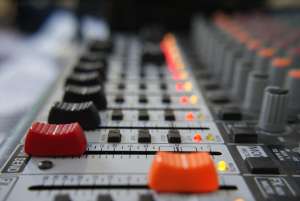
Adding well-controlled, detailed compression to an audio track removes all of the undesirable features of the track while bringing its desirable aspects of it forward. This makes the track easier to listen to and easier to add to a mix.
The purpose of compression in music is to take control of an audio track and bring it into set parameters. This makes it easier to work with and better to listen to.
If compression is not used well, it can make a song or a track sound lifeless, as all of the organic features of the signal are squashed by the compression, making the audio lack feel and depth.
For this reason, compression must be used sparingly and in a controlled manner.
Does Compressed Music Sound Better?
Every effect that can be used in music was invented for a reason. They are all intended to make music sound better in some way.
However, there are many producers and musicians who find compressed music to sound terrible according to their own standards. This leaves many wondering if compressed music sounds bad or if compression can help music sound better.
The reality is that any effect or function in music that is not used well will result in a poor-sounding track. Any effect that is over-used or used incorrectly will ruin the music, especially for people who know what good music should sound like.
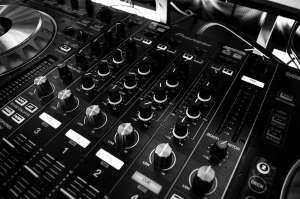
However, if compression is used well, it can drastically improve the sound of a song or a track and make it sound far better than it would without the compression.
Using compression to make music sound better requires significant skill and understanding. If compression is overused in music, it will drain the track of all life and produce a song that sounds empty, flat, and lifeless.
Well-used compression increases dynamics in music highlights the good aspects of a track and removes undesirable frequencies.
This means that compression can be used to make music sound better. Compressed music usually does sound better than uncompressed if the effect is used with skill and understanding.
Compression is everywhere in modern music, and it is almost impossible to find a modern song that is produced without some form of compression. The good sounds that compression can produce have become the industry standard, and no modern song is complete without it.
Is Music Compression Necessary?
We have established that compression can significantly improve the way music sounds and that it has become part of the industry standard in modern music – but is it necessary for a song to sound good?
The truth is that while compression is a helpful tool in making music, it is not always necessary. Most songs use compression in some form.

Very few songs compress the entire finished track. Compression is usually used sparingly on individual stems of instruments that make up a track and is not usually necessary for everything.
Compression is very useful in certain circumstances, but compression does not equal a good-sounding song. The way that compression improves music is not a magic recipe that produces good music.
A song, track, or stem should only use compression if it is necessary for that circumstance. Compression is necessary when the frequencies in a specific track reach levels that are too broad. This will cause the track to stand out too much in the mix, making it impossible to blend it with the rest of the piece.
Without compression, a track like this would need to be re-made or re-recorded. By adding compression, the range of the track will be brought into a manageable space, making it easier to mix it with the rest of the tracks.

Compression can also be used to shape and color the sound of a track, bringing some extra life into the piece. Using compression in this way will make the music sound better overall and can be necessary to make a song sound as good as possible.
However, some songs and the track that they are comprised of do not need to be compressed at all to sound good.
The necessity of compression depends on the way the music is recorded, produced, generated, and mixed. Some songs need it, and others do not.
Compression is not always necessary. You will need to use your judgment to compare the compressed and uncompressed versions of your song.
Can You Use Compression On Live Audio Signals?
Compression is mainly thought of as a processing effect for recorded music, but can it be used to shape the sound of a live audio signal during a live performance?

Compression can be used in a live setting, but it does introduce some latency that must be addressed. Compression-induced latency must be shifted digitally when used in a live performance, or the channel that is being compressed will not sync with the rest of the music.
Analog compressors do not introduce as much latency. The more compression you apply to a track, the more latency it will produce.
However, it is possible to use compression in live music with great success. Using compression in this context makes the audio signal from an instrument or microphone far more manageable and reduces the possibility of feedback.
Compression can make voices sound clear, and it can help the different audio channels blend together more easily in the live mix.
Using compression in a live setting is possible, but it requires skill to do correctly. Most live audio engineers must learn to balance compression and control the various facets of compression well to use it properly in a live context.
When done correctly, it can make a live band or live performance sound far better and much clearer to the audience.
Conclusion
Compression is a useful effect in music, and it can be used in several different ways and add several different benefits to a track. It can ruin a piece of music if overused – but if compression is used well, it produces clear, well-balanced, easily mixed music.
Take your time to learn how compression works, what it does, and the various ways to control it. Understanding compression is the first step to using it well, and not many producers or audio engineers take the time to do so.
You can learn about spectral effects here.
You can learn about reverb here.
You can learn about how compression and reverb interact here.
